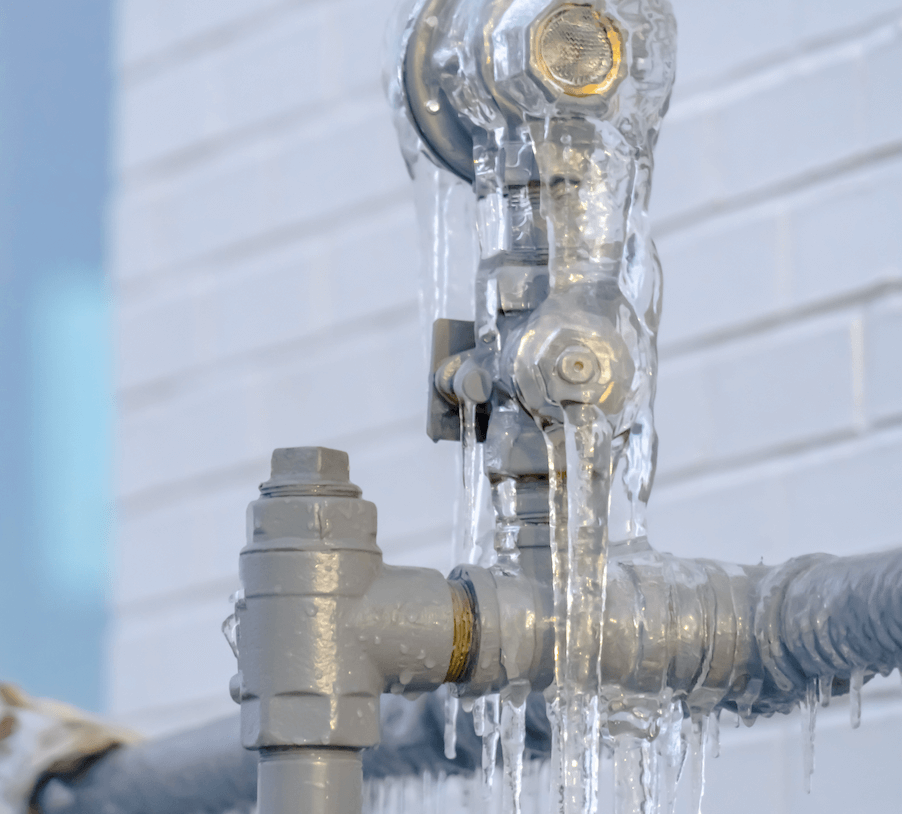Tips to Maintain Your Pipes from Freezing Damage: Essential Tips
Tips to Maintain Your Pipes from Freezing Damage: Essential Tips
Blog Article
Right here on the next paragraphs you can discover a lot of decent advice about Preventing and dealing with frozen pipes.
:strip_icc()/snow-outdoor-faucet-pipes-4af65d1e5e904fb1aa7bf74071fe5d89.jpg)
Winter can wreak havoc on your pipes, especially by freezing pipes. Below's exactly how to prevent it from happening and what to do if it does.
Intro
As temperatures decrease, the risk of frozen pipes boosts, possibly resulting in pricey repair work and water damages. Understanding just how to stop frozen pipelines is crucial for house owners in cool climates.
Prevention Tips
Shielding vulnerable pipes
Wrap pipelines in insulation sleeves or use warm tape to shield them from freezing temperatures. Focus on pipes in unheated or outside locations of the home.
Home heating methods
Maintain interior rooms properly warmed, especially areas with plumbing. Open cabinet doors to allow warm air to distribute around pipelines under sinks.
How to identify frozen pipelines
Try to find reduced water flow from faucets, unusual smells or sounds from pipelines, and visible frost on exposed pipelines.
Long-Term Solutions
Architectural changes
Take into consideration rerouting pipelines away from exterior wall surfaces or unheated areas. Add added insulation to attic rooms, basements, and crawl spaces.
Updating insulation
Purchase premium insulation for pipes, attic rooms, and walls. Appropriate insulation aids preserve consistent temperature levels and decreases the threat of frozen pipelines.
Safeguarding Exterior Plumbing
Yard hoses and outside faucets
Separate and drain garden tubes before winter months. Install frost-proof spigots or cover exterior faucets with protected caps.
Recognizing Frozen Pipes
What creates pipes to freeze?
Pipelines ice up when revealed to temperature levels below 32 ° F (0 ° C) for prolonged periods. As water inside the pipes ices up, it increases, putting pressure on the pipe wall surfaces and possibly triggering them to burst.
Risks and damages
Frozen pipes can result in water system disturbances, residential or commercial property damage, and expensive repairs. Ruptured pipelines can flood homes and cause extensive architectural damages.
Indications of Frozen Pipeline
Identifying frozen pipelines early can stop them from breaking.
What to Do If Your Pipes Freeze
Immediate actions to take
If you think frozen pipelines, keep taps open up to ease pressure as the ice thaws. Utilize a hairdryer or towels taken in warm water to thaw pipes gradually.
Conclusion
Avoiding icy pipes requires aggressive steps and fast reactions. By recognizing the causes, indicators, and preventive measures, home owners can safeguard their pipes during winter.
5 Ways to Prevent Frozen Pipes
Drain Outdoor Faucets and Disconnect Hoses
First, close the shut-off valve that controls the flow of water in the pipe to your outdoor faucet. Then, head outside to disconnect and drain your hose and open the outdoor faucet to allow the water to completely drain out of the line. Turn off the faucet when done. Finally, head back to the shut-off valve and drain the remaining water inside the pipe into a bucket or container. Additionally, if you have a home irrigation system, you should consider hiring an expert to clear the system of water each year.
Insulate Pipes
One of the best and most cost-effective methods for preventing frozen water pipes is to wrap your pipes with insulation. This is especially important for areas in your home that aren’t exposed to heat, such as an attic. We suggest using foam sleeves, which can typically be found at your local hardware store.
Keep Heat Running at 65
Your pipes are located inside your walls, and the temperature there is much colder than the rest of the house. To prevent your pipes from freezing, The Insurance Information Institute suggests that you keep your home heated to at least 65 degrees, even when traveling. You may want to invest in smart devices that can keep an eye on the temperature in your home while you’re away.
Leave Water Dripping
Moving water — even a small trickle — can prevent ice from forming inside your pipes. When freezing temps are imminent, start a drip of water from all faucets that serve exposed pipes. Leaving a few faucets running will also help relieve pressure inside the pipes and help prevent a rupture if the water inside freezes.
Open Cupboard Doors
Warm your kitchen and bathroom pipes by opening cupboards and vanities. You should also leave your interior doors ajar to help warm air circulate evenly throughout your home.

We were shown that editorial on Helpful Tips to Prevent Frozen Pipes this Winter from a pal on another web property. In case you enjoyed reading our blog entry please be sure to share it. Thank-you for taking the time to read it.
View More Report this page